VỊ TRÍ PHÂN BỐ CÁC ĐIỂM THẦN KINH CỦA THẦN KINH PHỤ VÀO CƠ THANG TRÊN XÁC NGƯỜI VIỆT TRƯỞNG THÀNH ỨNG DỤNG TRONG PHONG BẾ THẦN KINH CƠ
Nội dung chính của bài viết
Tóm tắt
Đặt vấn đề: Hội chứng đau mạc cơ đang là một vấn đề sức khỏe cần được quan tâm. Tại Việt Nam, hiện chưa có nghiên cứu nào được thực hiện về sự phân bố các điểm thần kinh của thần kinh phụ trong cơ thang. Mục tiêu: Mô tả vị trí phân bố các điểm thần kinh của thần kinh phụ vào cơ thang trên xác người Việt trưởng thành. Đối tượng và phương pháp nghiên cứu: Nghiên cứu mô tả cắt ngang thực hiện trên 18 cơ thang trên xác tươi của người Việt trưởng thành được bảo quản lạnh. Kết quả: Trên hệ trục tọa độ, các điểm thần kinh chủ yếu tập trung ở góc phần tư IV với tỉ lệ 68,3%. Khi chia trục hoành thành 16 khoảng đơn vị, điểm thần kinh được giới hạn bởi một hình chữ nhật có chiều dài bằng 5 khoảng đơn vị của trục hoành (từ khoảng 11 đến khoảng 15) và chiều rộng bằng 1/4 trục tung. Khoảng 11 có sự phân bố các điểm thần kinh cao nhất với tỉ lệ là 26,47%. Kết luận: Nghiên cứu đã mô tả chi tiết vị trí phân bố các điểm thần kinh vào cơ thang của thần kinh phụ trên xác người Việt trưởng thành, góp phần cung cấp những dữ liệu quan trọng cho lĩnh vực giải phẫu và ứng dụng lâm sàng.
Chi tiết bài viết
Từ khóa
Điểm thần kinh, thần kinh phụ, cơ thang.
Tài liệu tham khảo
2. Ziembicki T. Nerve entry points – The anatomy beneath trigger points. Journal of Bodywork and Movement Therapies. 2023/07/01/ 2023; 35:121-123. doi:https://doi.org/10.1016/j.jbmt.2023.04.083
3. Urits I, Charipova K, Gress K, et al. Treatment and management of myofascial pain syndrome. Best Practice & Research Clinical Anaesthesiology. 2020; 34(3):427-448. doi: 10.1016/ j.bpa.2020.08.003
4. Walker JW, Shah BJ. Trigger point injections: a systematic, narrative review of the current literature. SN Comprehensive Clinical Medicine. 2020;2(6):746-752. doi:10.1007/s42399-020-00286-0
5. Schnitzler A, Roche N, Denormandie P, Lautridou C, Parratte B, Genet F. Manual needle placement: accuracy of botulinum toxin A injections. Muscle & nerve. 2012; 46(4):531-534. doi: 10.1002/mus.23410
6. Xie P, Qin B, Yang F, et al. Lidocaine injection in the intramuscular innervation zone can effectively treat chronic neck pain caused by MTrPs in the trapezius muscle. Pain Physician. 2015; 18(5):E815.
7. Bae J-H, Lee J-S, Choi D-Y, Suhk J, Kim ST. Accessory nerve distribution for aesthetic botulinum toxin injections into the upper trapezius muscle: anatomical study and clinical trial: reproducible BoNT injection sites for upper trapezius. Surgical and Radiologic Anatomy. 2018; 40:1253-1259. doi: 10.1007/s00276-018-2059-4
8. Gavid M, Mayaud A, Timochenko A, Asanau A, Prades J. Topographical and functional anatomy of trapezius muscle innervation by spinal accessory nerve and C2 to C4 nerves of cervical plexus. Surgical and Radiologic Anatomy. 2016; 38:917-922. doi: 10.1007/s00276-016-1658-1
9. Wang J-W, Zhang W-B, Li F, et al. Anatomy and clinical application of suprascapular nerve to accessory nerve transfer. World Journal of Clinical Cases. 2022; 10(27):9628. doi: 10.12998/wjcc.v10.i27.9628
10. Barbero M, Cescon C, Tettamanti A, et al. Myofascial trigger points and innervation zone locations in upper trapezius muscles. BMC musculoskeletal disorders. 2013; 14:1-9. doi: 10.1186/1471-2474-14-179


